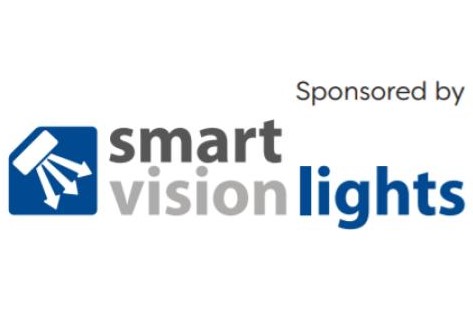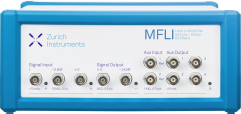A look at the current market for photoluminescence technology and some of the latest products available
Photoluminescence is a process during which a molecule absorbs a photon in the visible region in order to excite one of its electrons to a higher electronic state. It then radiates a photon as the electron returns to a lower energy state.
The technique can be used to measure the purity and crystalline quality of semiconductors, as well as quantification of the amount of disorder present in a system. In many cases photoluminescence carries valuable information that can facilitate sample analysis and augment Raman data.
As a subset of photoluminescence, fluorescence imaging is applied in biological sciences, where fluorescent tags are used to reveal the presence and distribution of molecular species. Photoluminescence is also used to study crystal defects, such as atomic vacancies and substitutions, which is important when it comes to materials such as diamond and silicon carbide.
Photoluminescence products on the market now
Vendors of photoluminescence products and equipment include Avantes, which has developed a fluorescence bundle for challenging setups that arise due to the height of fluorescent emission. The AvaSpec-HS2048XL-EVO offers high sensitivity, while the
AvaLight-HPLED series provides excitation at the required wavelength. Typical applications include dye identification, fluorescent lamps, diagnoses of malignancies and fluorescent labelling.
Edinburgh Instruments’ FLS1000 photoluminescence spectrometer is a modular fluorescence and phosphorescence spectrometer used to measure spectra from the ultraviolet to the mid-infrared spectral range (up to 5,500nm), and lifetimes spanning from picoseconds to seconds. The large sample chamber will house practically any type of sample accessory and it has a guaranteed sensitivity of >35,000:1 for the standard water Raman measurement using the SQRT.
Hamamatsu Photonics developed the Quantaurus as a compact, easy-to-use system with a small footprint based on the company’s established C9920-02,-02G/03,-03G systems for measuring absolute photoluminescence quantum yields. Operation is designed to be simple; the user can load a sample and press the start button to measure the photoluminescence quantum yields, excitation wavelength dependence, photoluminescence excitation spectrum and other properties in a short time.
Horiba’s photoluminescence-optimised series of spectrophotometers are used in fluorescence spectrometers, Raman spectrometers and the firm’s custom optical solution systems. By combining Raman analysis with photoluminescence detection, it is possible to characterise both the vibrational and electronic properties of materials on a single bench top platform. Combined Raman- photoluminescence systems allow confocal mapping capabilities with sub-micron spatial resolution. A wide range of excitation wavelengths is possible, from the UV to NIR, allowing control of the penetration depth into the material, and thus, control of the volume sampled.
Intego developed a photoluminescence scanner in 2016 in collaboration with the Fraunhofer institute IISB and other partners from industry and academia to concentrate on the inspection of SiC wafers. The scanner provides short inspection times suitable for industrial applications. The previous techniques are either destructive (selective etching) or very cost-intensive (synchrotron X-ray radiation). It can achieve reliable identification of the most significant crystallographic defects. In the scanning process, a specific UV laser is used as the excitation source (wavelength 325nm) in combination with a sensitive EMCCD camera. It can detect stacking faults, plane dislocations, and threading dislocations.
Klar Scientific’s instruments target scientists and engineers with more modest budgets, whose primary interest is in photoluminescence but who occasionally need to make a Raman measurement as well. The company provides a Raman spectroscopy kit at 532nm, which includes a powerful laser and more sensitive spectrometer. For users whose needs span multiple types of spectroscopy, Klar’s reconfigurable, modular instruments can be a cost-effective solution.
McPherson is a manufacturer of scientific instruments, high-performance spectrometers and purpose-built spectroscopy systems. The company also provides components and services for the soft x-ray and vacuum ultraviolet region. Its triple monochromator, for example, is ideal for making Raman, photoluminescence and Thomson scattering measurements in a variety of ways. The triple configuration allows users to create a bandpass ‘notch’ of select wavelengths and disperse them onto a sensitive CCD or another array detector. The width and slope of the notches’ edges can be tailored for the user’s application. It uses exclusively reflective optics and is capable of working deep into the UV range. It can be equipped with many different diffraction gratings and works as fast as f/5.
NKT Photonics offers a range of products for use in photoluminescence, such as the Origami Iro femtosecond optical parametric amplifier system. Origami Iro is a widely tunable (210nm to 11µm), cost-effective femtosecond laser and optical parametric amplifier system with multi-µJ output. It provides beam-pointing stability in a compact air-cooled system that is fully automated and environmentally stable.
PicoQuant offers several systems that can be used for time-resolved photoluminescence (TRPL), including the FluoTime 250 compact and modular fluorescence lifetime spectrometer, which integrates essential optics and electronics for TRPL spectroscopy in a compact, fully automated device. The FluoTime 300, meanwhile, is a fully automated, high-performance fluorescence lifetime spectrometer and the MicroTime 100 is an idea tool for the study TRPL of solid samples such as wafers, semiconductors or solar cells. In the same range, the MicroTime 200 is a modular, time-resolved confocal fluorescence microscopy platform, capable of fluorescence correlation spectroscopy and its daughter techniques as well as TRPL imaging / fluorescence lifetime imaging (FLIM) with single molecule detection sensitivity.
FLIM is a microscopy technique based on measuring the photoluminescence decay time of either the dyes used for labelling or the investigated material itself. Toptica offers a broad variety of femto- and picosecond fibre lasers ideally suited for being used in FLIM microscopy, due to their short pulse durations and broad wavelength coverage.
With its 500 kHz input bandwidth covering the most common modulation frequencies, the MFLI Lock-in Amplifier from Zurich Instruments is an ideal fit for photoluminescence experiments. It has a low-input noise level of only 2.5nV/√Hz, so that very small features can be measured in a spectra within a reasonable integration time. LabOne features tools such as the plotter, which displays the time trace of the signal’s amplitude to assist during beam alignment. Connecting it to a wifi-enabled network, the MFLI can also be controlled through a tablet or even a smartphone, while its compact form factor of the MFLI makes it easy to position close to the measurement setup.
This is not an exhaustive list. If you provide products and solutions for photoluminescence and would like your company included, please let us know at: editor.electro@europascience.com

Photonic Solutions: Featured photoluminescence product
Zurich Instruments’ MFLI lock-in amplifier is the ideal fit for photoluminescence measurements Photoluminescence is a common technique used to characterise the optoelectronic properties of semiconductors and other materials. Its principle is simple but ambient light can seriously interfere with PL measurements. With a lock-in amplifier measuring both modulated laser and emitted light, you maximise the rejection of these spurious light signals.
With its 500kHz input bandwidth and very low input noise level, Zurich Instruments’ MFLI lock-in amplifier is the ideal fit for measurement of very small PL features across the most common modulation frequencies. Fast demodulators allow for measurements of short transients and the current input with eight gain levels removes the need for an intermediate transimpedance amplifier. Instead, the photo-generated current can be measured directly from photodiodes. Contact Photonic Solutions in the UK to find out more.


